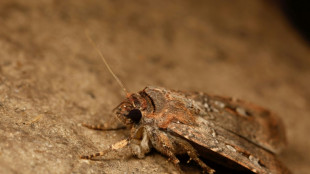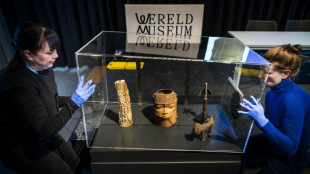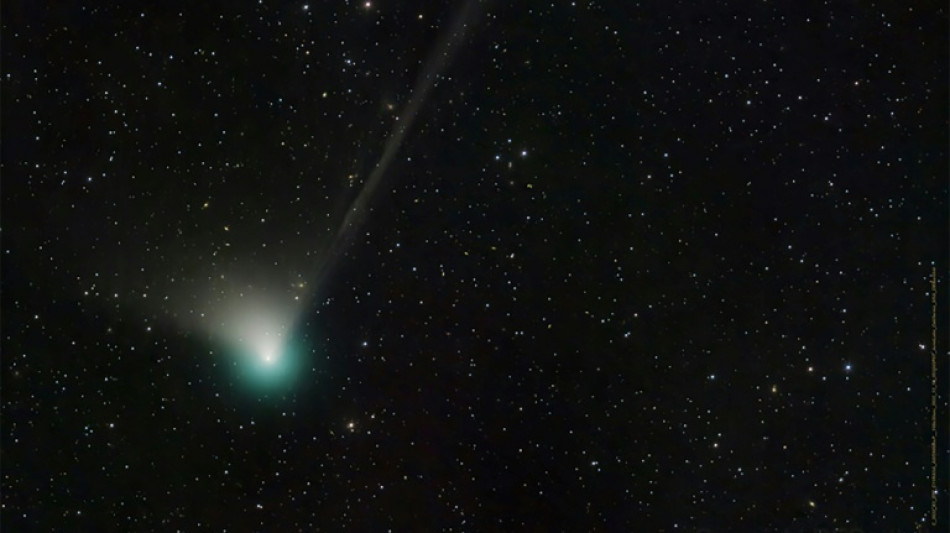
-
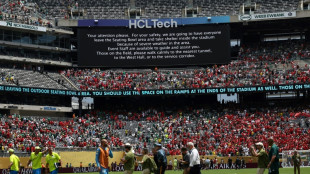 Palmeiras v Al Ahly Club World Cup clash suspended for weather
Palmeiras v Al Ahly Club World Cup clash suspended for weather
-
French Open winner Gauff falls at first hurdle on Berlin grass
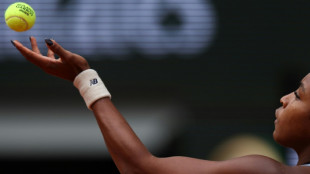
-
 Cleanup begins as Hurricane Erick moves on from Mexican coast
Cleanup begins as Hurricane Erick moves on from Mexican coast
-
Restoration rejuvenates iconic Gaudi house in Barcelona

-
 France softens restrictions for Telegram founder Durov
France softens restrictions for Telegram founder Durov
-
Trump 'Golden Dome' plan tricky and expensive: experts
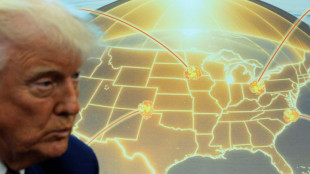
-
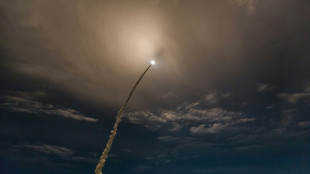 French state leads capital increase for satellite operator Eutelsat
French state leads capital increase for satellite operator Eutelsat
-
Russia steps out from shadows in Africa with state paramilitary

-
 Trawlerman and Buick move into top gear to land Ascot Gold Cup
Trawlerman and Buick move into top gear to land Ascot Gold Cup
-
France softens restrictions for Telegram founder Durov: judicial source

-
 Trump extends deadline for TikTok sale by 90 days
Trump extends deadline for TikTok sale by 90 days
-
Indonesia leader touts growing Russia ties after talks with Putin

-
 Czech champion Kvitova calls time on tennis career
Czech champion Kvitova calls time on tennis career
-
Test series win in England bigger prize than IPL, says India captain Gill
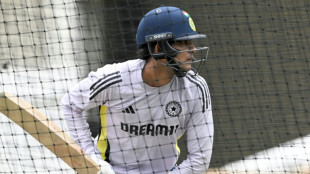
-
 Sabalenka back to winning ways in Berlin
Sabalenka back to winning ways in Berlin
-
Mahuchikh, Holloway headline Paris Diamond League

-
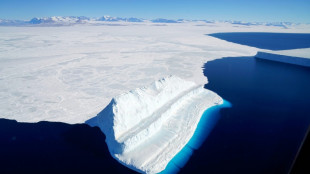 How did life survive 'Snowball Earth'? In ponds, study suggests
How did life survive 'Snowball Earth'? In ponds, study suggests
-
Russell signs new deal at Premiership champions Bath

-
 2,000-year-old Roman wall paintings unearthed in London
2,000-year-old Roman wall paintings unearthed in London
-
Tourists, fishermen hunker as Hurricane Erick pounds Mexican coast
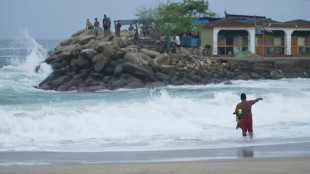
-
 How Trumponomics has shaken global markets
How Trumponomics has shaken global markets
-
Sabalenka back to winnings ways in Berlin

-
 Real Madrid star Mbappe hospitalised with stomach bug
Real Madrid star Mbappe hospitalised with stomach bug
-
Dropping Pope for India Test would have been 'remarkable', says England's Stokes

-
 Climate change could double summer rainfall in the Alps: study
Climate change could double summer rainfall in the Alps: study
-
If Iran's Khamenei falls, what would replace him?

-
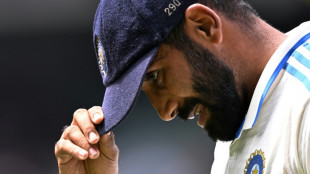 India's Bumrah aiming for three Tests out of five against England
India's Bumrah aiming for three Tests out of five against England
-
Mutilation ban and microchips: EU lawmakers approve cat and dog welfare rules

-
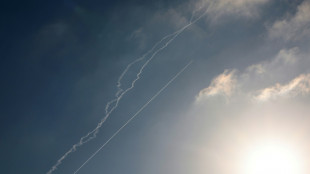 Israel minister says Iran leader 'can no longer exist' after hospital hit
Israel minister says Iran leader 'can no longer exist' after hospital hit
-
Thai PM clings on as crisis threatens to topple government

-
 Govts scramble to evacuate citizens from Israel and Iran
Govts scramble to evacuate citizens from Israel and Iran
-
Floods expected after Hurricane Erick makes landfall in western Mexico

-
 Russia warns US against 'military intervention' in Iran-Israel war
Russia warns US against 'military intervention' in Iran-Israel war
-
Budapest mayor defies police ban on Pride march

-
 Air India says plane 'well-maintained' before crash
Air India says plane 'well-maintained' before crash
-
Arctic warming spurs growth of carbon-soaking peatlands
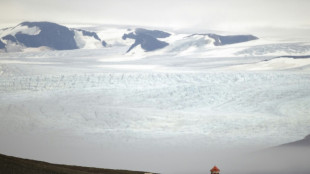
-
 Swiss central bank cuts interest rates to zero percent
Swiss central bank cuts interest rates to zero percent
-
Bordeaux-Begles 'underdogs' before Top 14 semis despite Champions Cup triumph

-
 Gattuso convinced Italy can reach World Cup
Gattuso convinced Italy can reach World Cup
-
Relieved Pakistanis recall 'horrifying nights' as Israel, Iran trade strikes

-
 England v India: Three key battles
England v India: Three key battles
-
Stocks drop, oil gains as Mideast unrest fuels inflation fears

-
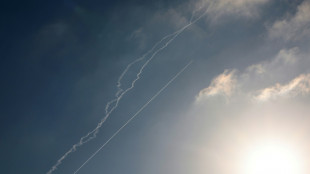 Israel's Netanyahu says Iran will 'pay heavy price' after hospital hit
Israel's Netanyahu says Iran will 'pay heavy price' after hospital hit
-
France steps closer to defining rape as lack of consent

-
 SpaceX Starship explodes during routine test
SpaceX Starship explodes during routine test
-
Belgrade show plots path out of Balkan labyrinth of pain

-
 Thailand's 'Yellow Shirts' return to streets demand PM quit
Thailand's 'Yellow Shirts' return to streets demand PM quit
-
Stocks drop after Fed comments as Mideast fears lift crude

-
 Govts scramble to evacuate citizens from Israel, Iran
Govts scramble to evacuate citizens from Israel, Iran
-
'Moving Great Wall': China unleash towering teen basketball star


Once in 50,000-year comet may be visible to the naked eye
A newly discovered comet could be visible to the naked eye as it shoots past Earth and the Sun in the coming weeks for the first time in 50,000 years, astronomers have said.
The comet is called C/2022 E3 (ZTF) after the Zwicky Transient Facility, which first spotted it passing Jupiter in March last year.
After travelling from the icy reaches of our Solar System it will come closest to the Sun on January 12 and pass nearest to Earth on February 1.
It will be easy to spot with a good pair of binoculars and likely even with the naked eye, provided the sky is not too illuminated by city lights or the Moon.
The comet "will be brightest when it is closest to the Earth", Thomas Prince, a physics professor at the California Institute of Technology who works at the Zwicky Transient Facility, told AFP.
Made of ice and dust and emitting a greenish aura, the comet is estimated to have a diameter of around a kilometre, said Nicolas Biver, an astrophysicist at the Paris Observatory.
That makes it significantly smaller than NEOWISE, the last comet visible with an unaided eye, which passed Earth in March 2020, and Hale–Bopp, which swept by in 1997 with a potentially life-ending diameter of around 60 kilometres.
But the newest visit will come closer to Earth, which "may make up for the fact that it is not very big", Biver said.
While the comet will be brightest as it passes Earth in early February, a fuller moon could make spotting it difficult.
For the Northern Hemisphere, Biver suggested the last week of January, when the comet passes between the Ursa Minor and Ursa Major constellations.
The new moon during the weekend of January 21-22 offers a good chance for stargazers, he said.
"We could also get a nice surprise and the object could be twice as bright as expected," Biver added.
Prince said another opportunity to locate the comet in the sky will come on February 10, when it passes close to Mars.
- 'Rare visitor' -
The comet has spent most of its life "at least 2,500 times more distant than the Earth is from the Sun", Prince said.
Biver said the comet was believed to have come from the Oort Cloud, a theorised vast sphere surrounding the Solar System that is home to mysterious icy objects.
The last time the comet passed Earth was during the Upper Paleolithic period, when Neanderthals still roamed Earth.
Prince said the comet's next visit to the inner Solar System was expected in another 50,000 years.
But Biver said there was a possibility that after this visit the comet will be "permanently ejected from the Solar System".
Among those closely watching will be the James Webb Space Telescope. However, it will not take images, instead studying the comet's composition, Biver said.
The closer the comet is to Earth, the easier it is for telescopes to measure its composition "as the Sun boils off its outer layers", Prince said.
This "rare visitor" will give "us information about the inhabitants of our Solar system well beyond the most distant planets", he added.
A.AbuSaada--SF-PST

